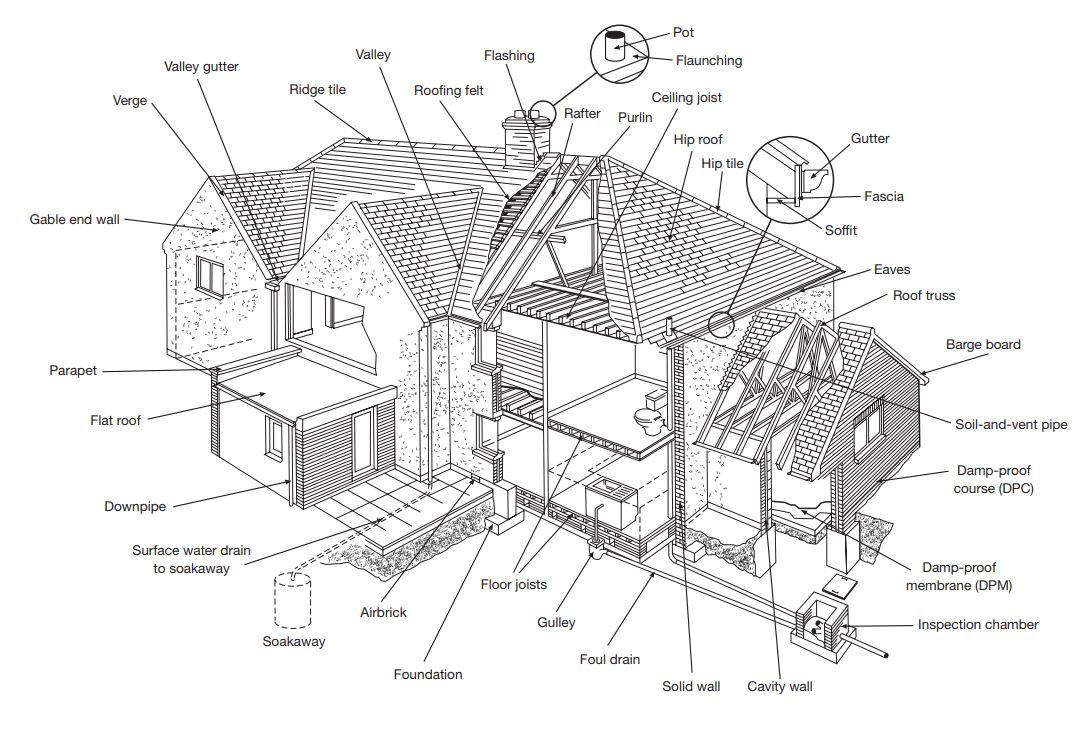 A Chartered Surveyor may seem a financial extravagance when you are just about to spend a fortune on the biggest investment you have ever made. However, the cost should be considered as a necessary part of the home buying process, and an expense that can save you a considerably bigger sum of money if your new property harbours problems you don’t know about.
A Chartered Surveyor may seem a financial extravagance when you are just about to spend a fortune on the biggest investment you have ever made. However, the cost should be considered as a necessary part of the home buying process, and an expense that can save you a considerably bigger sum of money if your new property harbours problems you don’t know about.
The survey carried out by your mortgage provider will not check the condition of the property.
When you buy a property, you must have your own survey carried out. The report you receive will highlight potential repairs, and you can use it to negotiate with the seller so that work is carried out before the completion of your home purchase, or even to renegotiate the price if the price you are paying doesn’t already reflect the cost of repairs.
There are a number of survey types offering different levels of checks and cost, and the suitability of each depends on the age and type of property you are buying. Like most things in life, including the house you are about to buy, the more comprehensive the survey, the longer it will take and the more expensive it will be.
What type of survey do I need?
There are three conventional elements to a building survey: inspection of the property, surveyor’s report and valuation. This list begins with the most comprehensive and finishes with the simplest. Not all surveys are suitable for all properties and the work carried out by surveyors within each survey may vary.
Remember that a good Independent Chartered Surveyor will discuss the survey with you, and agree the cost, before carrying out the work to ensure that you receive the correct survey for your needs. An Independent Chartered Surveyor will always be happy to tailor the survey to your individual needs.
1. Building (formerly Structural) Survey this comprehensive, full structural survey checks just about everything including what lies in the attic, within walls or beneath floorboards, where accessible. If your property falls into the category of being older (20 years or more), larger, in poor condition, significantly renovated or a bit unusual, then a Building Survey is appropriate. The surveyor will inspect the property from top to bottom, flagging up any legal issues, defects or maintenance necessary in the structure.
2. Homebuyers Report checks the general condition of the building including the existence of subsidence or damp, and is suitable for buildings that are in a reasonable condition, unless they fall into the categories described under Building Survey (above). The Homebuyers Report is non-intrusive so doesn’t look under the floorboards, and can include a market valuation and/or indication of the rebuild cost (which you will need for insurance purposes). You will find out if the property doesn’t meet current building regulations and get advice on repairs and maintenance.
3.Condition Report provides an overview of the property’s condition and is suitable for conventional houses and newer homes that are built from common materials and are in reasonable condition. Significant issues may be highlighted in a traffic light rating (although not in great detail) and you won’t get a valuation as part of a Condition Survey.
New Properties
New properties tend to be treated differently and, although these should be covered by a NHBC guarantee or similar, most would benefit from a Snagging Survey.
Snagging Survey If you’re buying a new build home, then a snagging survey is for you. It will look at defects and cover everything from cosmetic problems to structural issues. The surveyor can carry out this survey before completion, so you can get any problems rectified under the developer’s warranty. They often take longer to rectify if you have already passed over the money to the developer.
Are you still a confused home buyer?
The good news is that home buyers may soon be better protected from commissioning an unsuitable survey. That’s because the Royal Institution of Chartered Surveyors (RICS), the professional body that looks after the industry, intends to simplify the Homebuyers Report.
The new system will replace all the current RICS home surveys and replace them with a single three-level survey. RICS hopes that all surveyors, whether RICS-regulated or not, will adopt the changes and work to the same standards.
Baffled by the terminology?
Another area that can confuse home buyers is the language used by surveyors. This will be simplified in the new survey report system. In the meantime, this RICS diagram might help you understand the difference between your purlins and flaunching.

All surveys are carried out under detailed terms and conditions, which should be checked and discussed by the client and surveyor, before the survey is carried out.
Back to February 2019 Newsletter
© www.PropertySurveying.co.uk
SH/LCB

